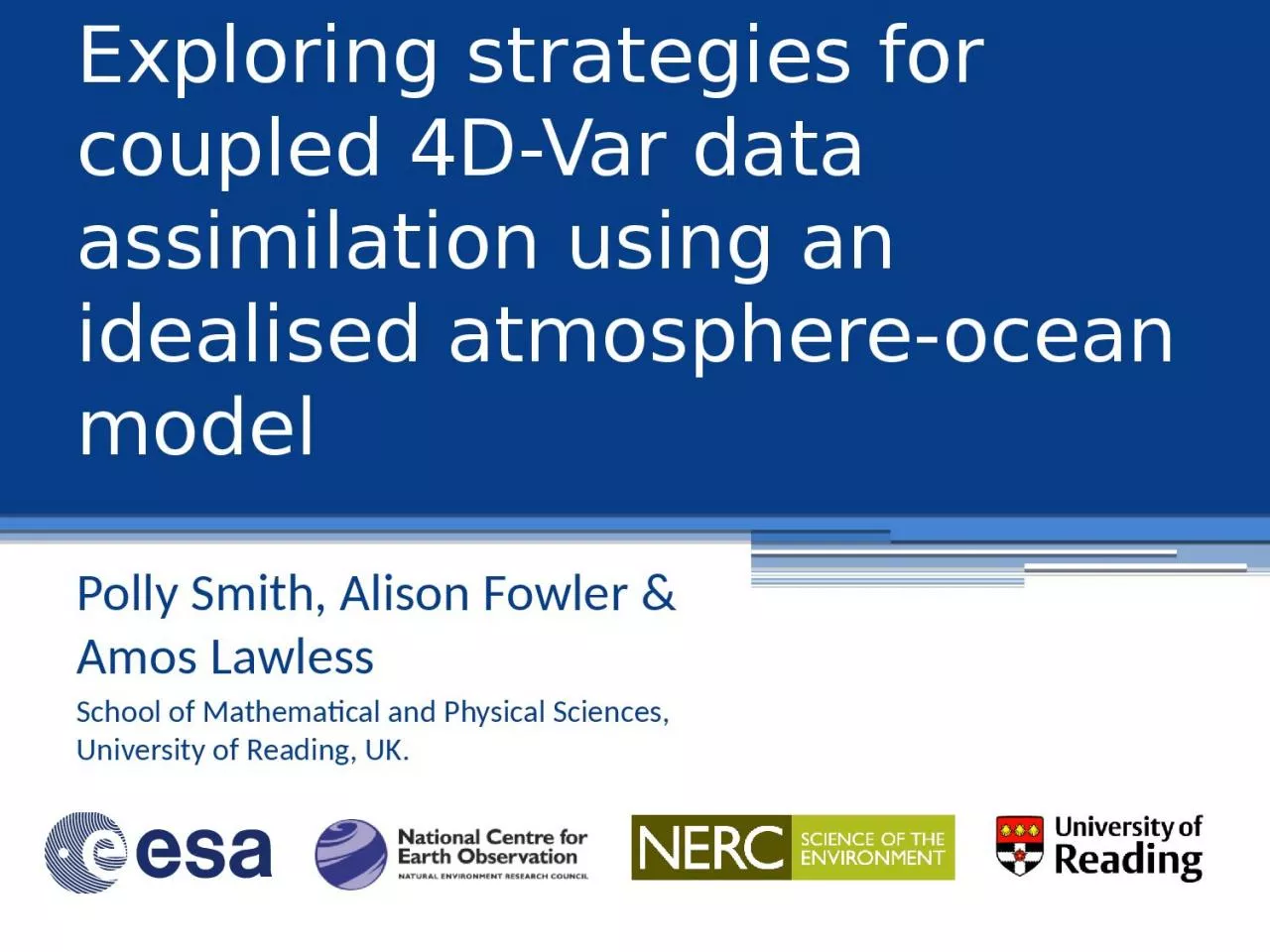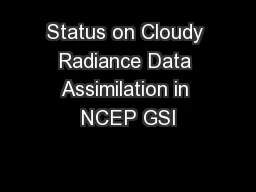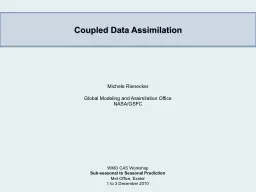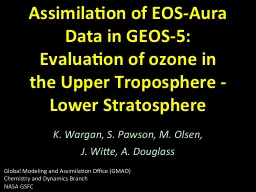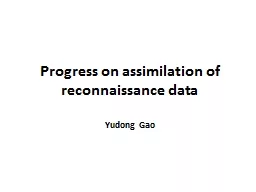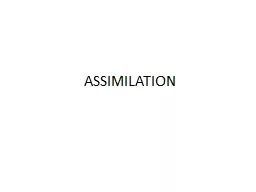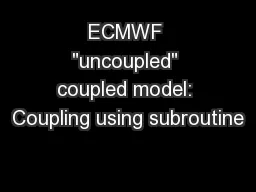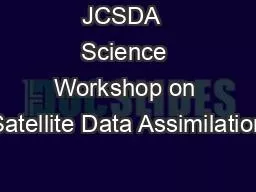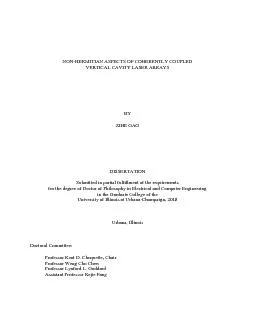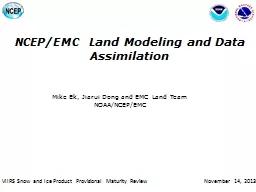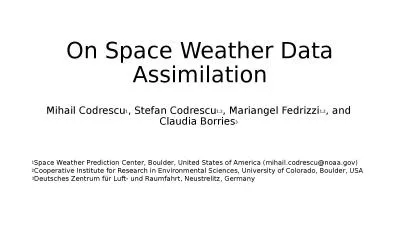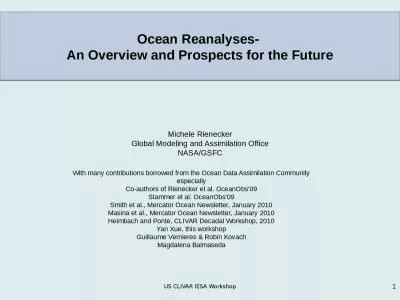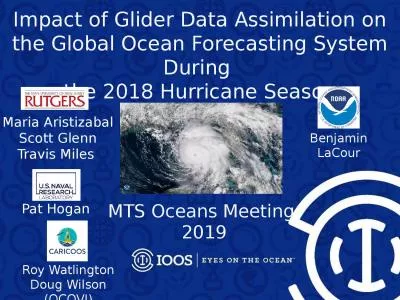PPT-Exploring strategies for coupled 4D-Var data assimilation using an idealised atmosphere-ocean
Author : desha | Published Date : 2023-09-25
Polly Smith Alison Fowler amp Amos Lawless School of Mathematical and Physical Sciences University of Reading UK Introduction 1 Typically initial conditions
Presentation Embed Code
Download Presentation
Download Presentation The PPT/PDF document "Exploring strategies for coupled 4D-Var..." is the property of its rightful owner. Permission is granted to download and print the materials on this website for personal, non-commercial use only, and to display it on your personal computer provided you do not modify the materials and that you retain all copyright notices contained in the materials. By downloading content from our website, you accept the terms of this agreement.
Exploring strategies for coupled 4D-Var data assimilation using an idealised atmosphere-ocean: Transcript
Download Rules Of Document
"Exploring strategies for coupled 4D-Var data assimilation using an idealised atmosphere-ocean"The content belongs to its owner. You may download and print it for personal use, without modification, and keep all copyright notices. By downloading, you agree to these terms.
Related Documents

